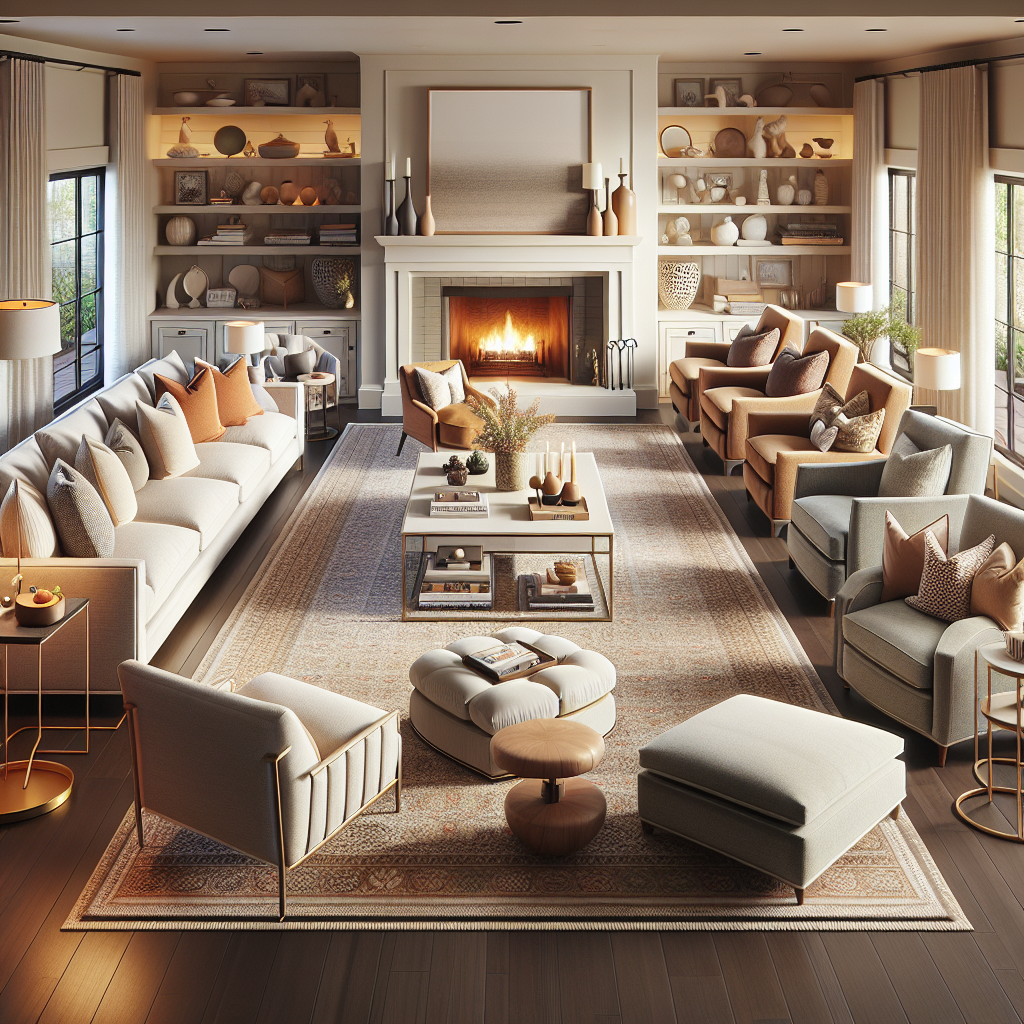When they arrange their living room furniture, many people aim to create a space that’s both functional and cozy. It might seem daunting, but it’s all about following some key Living Room Furniture Tips. By thoughtfully arranging the furniture, they can make their living room a place where they, their family, and their guests feel comfortable and at ease.
Understanding the Space
Before starting to move furniture around, it’s essential to understand the living room’s dimensions and shape. According to Statista, the average size of a family home in the U.S. is around 2,300 square feet, suggesting that space management is crucial. Measure the room, noting where windows, doors, and other architectural elements are located, and jot these details down.
Establishing a Focal Point
Every well-arranged living room starts with a focal point. This could be a fireplace, a large window with a view, or a television. The furniture should be oriented around this focal point, creating a sense of harmony and purpose within the room.
Creating Conversation Zones
Furniture in a living room should promote conversation. They should arrange seating in a way that people can easily interact without straining their necks. For example, placing sofas and chairs across from each other helps facilitate conversation. A good rule of thumb is to keep seats within 8-10 feet of each other.
| Seat Type | Recommended Distance |
|---|---|
| Sofa to Sofa | 8-10 feet |
| Chair to Chair | 4-8 feet |
| Sofa to TV | 6-12 feet |
Considering the Traffic Flow
For maximum comfort, they must ensure there’s an easy and logical flow of traffic through the living room. People should be able to walk between furniture pieces without difficulty. Generally, there should be at least 2-3 feet of walking space between furniture pieces to ensure a comfortable and unobstructed path.
Balancing the Furniture
A balanced room is more aesthetically pleasing and comfortable. They can achieve balance by ensuring that no one side of the room feels heavier than the other. For instance, if they have a large sofa on one side, they might balance it with two chairs or a loveseat on the opposite side.
Adding Personal Touches
Personal touches make a living room feel unique and homely. They can add family photos, artwork, or other decorative items that reflect their personality. They should use throw pillows and blankets to add color and comfort to their seating. Plants also add a refreshing touch and improve indoor air quality, according to a study by NASA.
Incorporating Multi-Functional Furniture
Multi-functional furniture can be a game-changer. Items like ottomans that double as storage, coffee tables with added functionality, or sofa beds can save space and add comfort. Multi-functional pieces are particularly useful for smaller living rooms where space is at a premium.
Using Area Rugs
Area rugs can define different spaces within a living room, especially in open floor plans. They should ensure the rug is the right size for their seating area. A good rule is to have all furniture legs on the rug or at least the front legs, to ensure the area feels cohesive.
Key Takeaways
- Understanding room dimensions is crucial;
- Establish a focal point for arranging furniture;
- Create conversation zones for easy interaction;
- Maintain a logical traffic flow;
- Balance furniture for aesthetic appeal;
- Add personal touches for uniqueness;
- Incorporate multi-functional furniture;
- Use area rugs to define spaces.
FAQs
1. How do I choose a focal point in my living room?
Identify a prominent feature like a fireplace, a view from a window, or a large television. Arrange furniture around this feature to create a harmonious setup.
2. How far should a sofa be from the TV?
A comfortable distance between a sofa and the TV is generally between 6 and 12 feet, depending on the size of the TV.
3. What size should my area rug be?
An area rug should be large enough to fit all the furniture legs within the seating area, or at least the front legs to create a cohesive space.
4. How do I balance large pieces of furniture?
Balance large pieces like a sofa with other substantial pieces across the room, such as a couple of chairs or a loveseat, for a more aesthetically pleasing arrangement.
5. Why is traffic flow important in a living room?
A good traffic flow ensures that the living room is accessible and comfortable, allowing people to move around without obstruction, adding to the room’s overall comfort and functionality.
“`
